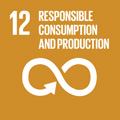- Docente: Pier Giorgio Cozzi
- Credits: 6
- SSD: CHIM/06
- Language: Italian
- Moduli: Pier Giorgio Cozzi (Modulo 1) Marco Bandini (Modulo 2)
- Teaching Mode: In-person learning (entirely or partially) (Modulo 1); In-person learning (entirely or partially) (Modulo 2)
- Campus: Bologna
- Corso: Second cycle degree programme (LM) in Chemistry (cod. 9072)
Learning outcomes
At the end of the course, the student is able to interpret, understand and design new catalytic reactions, through the understanding of the coordination geometries of complexes, properties of binders, and catalytic cycles, in stereoselective and non-selective reactions. The student also gains experience on some of the most modern experimental procedures in the field of asymmetric synthesis (catalysis) and in the instrumental resolution of stereoisomeric mixtures of organic compounds.
Course contents
Chapter 1. Introduction to the Mayr scale. The Mayr Staircase. Electrophiles and nucleophiles. Definition and use of the k-speed relation. Examples and discussion.
Chapter 2. Organocatalysis. Introduction and ways of activation. Main organocatalysts and use of the concepts of the Mayr scale for the main organocatalytic reactions. Examples of catalysis via enamine and iminium. Multicomponent organocatalytic reactions (outline). Cinchona alkaloids in organocatalysis. Catalysis via carbenes. Nucleophilic catalysis. Bronsted acid catalysis. Thiouree. ACDC catalysis. Phase transfer catalysis. SOMO catalysis. Fotoredox catalysis, introduction, key concepts and application to organocatalytic reactions.
Chapter 3. Hydrogenations and reductions. Properties of phosphines and important parameters. Classes of Phosphines. employed. Reactions of hydrogenation and mechanism. Chiral phosphines, their use and properties. Hydrogenation of non-functionalized alkenes. Hydrogenation of ketones, imines. Transfer hydrogenation reactions. Use of iron and cobalt in hydrogenations.
Chapter 4. Methods of catalytic oxidation. review of the main oxidation methodologies, Sharpless, Jacobsen, Shi, and application examples. Oxidation methods with oxygen and hydrogen peroxide by oxidation and formation of phenols and alcohols. Alkenes oxygenation. Oxidation of alcohols to aldehydes and ketones. Allyl oxidation. Wacker oxidation. C = C bond breaking. Methods for synthesis of esters. Synthesis of Epoxides. Carboxylic acids. Nitriles.
Chapter 5. Cross coupling reactions (palladium and nickel). Palladium salts. Sources of palladium (0). Pd (I), Pd (II) or Pd (III). Oxidative addition and reductive elimination. Various key points of the catalytic cycle. Differences in reactivity, type of binders and methodologies. Main classes of reactions (examples). Catalysis with Nickel. Photoredox catalysis with nickel. Buckwald-Hartwig reactions. Mechanism of reactions and ligands. Hartwig's phosphines and Buchwald's phosphines. Historical development of the reaction. modern variants. Examples of application of cross coupling reactions in the industrial field.
Chapter 6. Cross coupling reactions with copper (Buchwald-Hartwig and Chan-Lam-Evans). Comparison Copper-Palladium. History. Binders for copper. Modern binders. Buchwald-Hartwig couplings. Mechanism of reactions. Ma ligands. Hartley reaction. Examples of C-N bond formation with copper. The Chan-Lam-Evans reactions.
Chapter 7. BDE and CH activation. REactions of Shilov and Periana. Use of DGs. Mechanisms of C-H activation. Catalytic methods. Use of palladium. PdII / PdIV. C-H activation, direct arylations, and cross coupling. Palladium, Ruthenium and iridium in the C-H activation reactions. Catellani reaction. Use of Nickel. CH actvation with CP * Rh (III). Borylation via CH activation. CH activation via carbenes and carbenoids. Activation with metals such as cobalt, manganese and iron and other metaals. Application examples.
Chapter 8. Outline of heterogeneous catalysis.
Laboratory course Advanced laboratory techniques concerning aspects of asymmetric catalysis. Synthesis of hetero-aromatic polycyclic systems in enantiomerically enriched form through the use of gold-based chiral transition metal complexes. Synthesis of chiral building blocks for the anti-inflammatory preparation, through the use of chiral organ-catalysts. Use of inert gas lines.
Readings/Bibliography
Slides of the lessons are provided, commented and numbered.
Teaching methods
Frontal course with transparencies projected in class and commented with the help of interactive screens or blackboard.
Assessment methods
Written exam with five theory questions (one laboratory question). Score 4.5 points x 4 questions (18 points) + 12 points (laboratory and laboratory question). 12 laboratory points are divided into 6 points for behavior and attitude in the laboratory and 6 points per question related to the laboratory course. Additional 6 points are assigned to a paper (in working groups, decided by the teacher) on the application of catalytic methods and not to a complex molecule of interest. The exam topic will be proposed by researchers from Chiesi Farmaceutica and evaluated by a commission.
Teaching tools
Slides of the course made available by the teacher.
Links to further information
https://site.unibo.it/stereoselective-metal-photoredox-catalysis-lab/en
Office hours
See the website of Pier Giorgio Cozzi
See the website of Marco Bandini
SDGs




This teaching activity contributes to the achievement of the Sustainable Development Goals of the UN 2030 Agenda.
